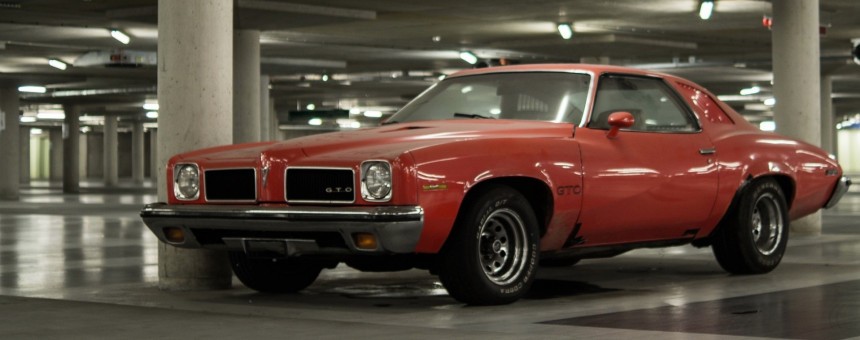Vehicles are meant to be used. However, our lives have so many twists and turns that you sometimes need to keep your car parked.
For some people, seasonal jobs keep them away from home for weeks or months at a time, but others have issues related to their health or finances.
There’s always the possibility you realize that projects won’t allow too much time behind the wheel in the next few weeks, so storing the car is better than leaving it parked somewhere.
The prime thing you need to do once you figure out that your vehicle will wait some time until it is driven is to determine an approximate period for this pause.
If something horribly wrong does not let you use your vehicle for over two years, but the car is fully functional and not rare, consider selling it.
Once you know how much time your car will remain parked, it is time to start preparing it for storage. In the case of brief periods, you do not have to do much to it, but we cannot stress the importance of considering a safe parking space for these situations.
Even if you have a garage, tell a neighbor or a friend who lives nearby to keep an eye for anything fishy related to your garage door.
I once had my garage door fixed without me being present, and one thoughtful neighbor called me to ask what’s that worker doing to my garage door. You need a friend like that if you decide to conceal your car in a garage that might not be in your proximity.
Remember, not driving a vehicle for long periods is the worst thing you can do to it, as its components will age and deteriorate without much control. Some damage could happen even if you follow all the steps listed below. Once this journey starts, write down what has been performed to the car, so you'll know what steps to follow when you return.
Going on a trip without your car, a vacation abroad, or it’s winter already? Well, this part of the guide tackles the boxes you should tick if you want to leave your vehicle unatended for more than a week, but less than six months. It will cost you a bit, but it’s cheaper than fixing rust, mending a flat tire, or dealing with a flat battery.
First of all, make certain your tires are up to the maximum recommended pressure. You can find the automaker’s recommendation on the inside of the fuel cap door, or on the B-pillars, near the driver’s seat, if you do not have a manual nearby.
The next thing you should do is clean and vacuum the interior. Once that’s done, wash your car thoroughly, and apply a cover of wax to the body to ensure it maintains its shine and is protected from the atmosphere and dust. Take your time, since you will enjoy the results the next time you get your vehicle out.
It's time for some mechanical preparations. An oil change, filter included, is recommended if you will store your car or motorcycle in the garage over the winter. This is because oil can become acidic once it ages, and this will lead to engine damage or leaky seals.
All your vehicle’s vital fluids must be checked and filled to the maximum recommended level. Including fuel, because the tank could rust due to condensation. If you are sure it will take several months until you drive your vehicle again, consider using a fuel stabilizer.
It is a good idea to grease steering and suspension components, as well as disconnecting the battery and lubricating the contact points on the vehicle’s side. Meanwhile, the accumulator itself should be placed on a trickle charger with a winter program. Make sure you do not get a cheap model or a fake one, as it needs to be safe to use and have a set of fuses inside in case it overheats.
Last, but not least, leave the vehicle with the parking brake disengaged, and use a set of wheel chocks to keep it in place. If you do not have wheel chocks in place, you can use big rocks, or just leave it in gear.
Are you going to be busy for the next six months or more, and there is no time to drive your vehicle in between? No problem, there are solutions. First of all, you have to follow the steps above.
On top of those, you should lubricate hinges and rubber seals. You will need a particular type of grease or lubricant for this. Secondly, it would be smart to block off the exhaust. A simple layer of duct tape over it should do. This is recommended to prevent moisture and potential small animals from getting in. We also suggest placing mice traps in your garage, as well as another pest deterrent.
If you leave the country or go a very long way from where your vehicle is stored, you should ask a friend to start it up every once in a while. Once it gets up to operating temperature, it should be driven for about fifteen to thirty minutes, just to ensure fluids get to move around. Naturally, only someone you trust should to this, and don’t forget to insure it and pay the road tax.
If you get a job offer abroad and cannot relocate your vehicle, or you have to relocate temporarily and cannot bring your “track toy” or weekend driver along, there are options. Vehicles can be stored for over a year, but things do get tricky.
First of all, you can forget the whole “periodical driving” procedure. Instead, you must prepare the car for extended storage. We recommend contacting a specialized company to drain all the fuel from your tank and fuel system, and sealing it off. All metal parts without paint should be coated with Lithium grease or equivalent products to prevent rust.
Do not forget to place dehumidifiers in your storage space. Cat litter just won’t do to absorb all the humidity inside your garage. Also, seal all windows of the storage space. The A/C or HVAC vents should also be sealed with duct tape, and the car must be covered with a textile cover.
The engine itself needs special treatment, like removing spark plugs and placing an oil-based product to prevent corrosion inside the cylinders. At this point, you can gift your battery to a friend if it is in healthy condition, or send it to a recycling facility, because it would be pointless to trickle-charge it for over a year.
The car should be set on jack stands to let the springs sit freely, and the tires should be deflated and covered to prevent flat spots. All rubber belts will age, so be prepared to buy new ones when you want to take the vehicle out for a drive. Consider the same for rubber hoses, which might crack after over a year in storage.
Another solution would be to consider lending the vehicle to a trusted friend in exchange for a small fee and an agreement to take care of it. Ask them to send you pictures of it on a regular basis. It might be best if you do not want to sell your ride, but cannot drive it for months at a time. This last suggestion is only valid if you have friends that are trustworthy and can afford to take care of a car like yours. Still, accidents happen, so don’t blame us if your friend crashes your ride.
There’s always the possibility you realize that projects won’t allow too much time behind the wheel in the next few weeks, so storing the car is better than leaving it parked somewhere.
The prime thing you need to do once you figure out that your vehicle will wait some time until it is driven is to determine an approximate period for this pause.
If something horribly wrong does not let you use your vehicle for over two years, but the car is fully functional and not rare, consider selling it.
Once you know how much time your car will remain parked, it is time to start preparing it for storage. In the case of brief periods, you do not have to do much to it, but we cannot stress the importance of considering a safe parking space for these situations.
Even if you have a garage, tell a neighbor or a friend who lives nearby to keep an eye for anything fishy related to your garage door.
I once had my garage door fixed without me being present, and one thoughtful neighbor called me to ask what’s that worker doing to my garage door. You need a friend like that if you decide to conceal your car in a garage that might not be in your proximity.
Remember, not driving a vehicle for long periods is the worst thing you can do to it, as its components will age and deteriorate without much control. Some damage could happen even if you follow all the steps listed below. Once this journey starts, write down what has been performed to the car, so you'll know what steps to follow when you return.
Short-term storage
First of all, make certain your tires are up to the maximum recommended pressure. You can find the automaker’s recommendation on the inside of the fuel cap door, or on the B-pillars, near the driver’s seat, if you do not have a manual nearby.
The next thing you should do is clean and vacuum the interior. Once that’s done, wash your car thoroughly, and apply a cover of wax to the body to ensure it maintains its shine and is protected from the atmosphere and dust. Take your time, since you will enjoy the results the next time you get your vehicle out.
It's time for some mechanical preparations. An oil change, filter included, is recommended if you will store your car or motorcycle in the garage over the winter. This is because oil can become acidic once it ages, and this will lead to engine damage or leaky seals.
All your vehicle’s vital fluids must be checked and filled to the maximum recommended level. Including fuel, because the tank could rust due to condensation. If you are sure it will take several months until you drive your vehicle again, consider using a fuel stabilizer.
It is a good idea to grease steering and suspension components, as well as disconnecting the battery and lubricating the contact points on the vehicle’s side. Meanwhile, the accumulator itself should be placed on a trickle charger with a winter program. Make sure you do not get a cheap model or a fake one, as it needs to be safe to use and have a set of fuses inside in case it overheats.
Last, but not least, leave the vehicle with the parking brake disengaged, and use a set of wheel chocks to keep it in place. If you do not have wheel chocks in place, you can use big rocks, or just leave it in gear.
More than six months of storage
On top of those, you should lubricate hinges and rubber seals. You will need a particular type of grease or lubricant for this. Secondly, it would be smart to block off the exhaust. A simple layer of duct tape over it should do. This is recommended to prevent moisture and potential small animals from getting in. We also suggest placing mice traps in your garage, as well as another pest deterrent.
If you leave the country or go a very long way from where your vehicle is stored, you should ask a friend to start it up every once in a while. Once it gets up to operating temperature, it should be driven for about fifteen to thirty minutes, just to ensure fluids get to move around. Naturally, only someone you trust should to this, and don’t forget to insure it and pay the road tax.
Over a year in storage
First of all, you can forget the whole “periodical driving” procedure. Instead, you must prepare the car for extended storage. We recommend contacting a specialized company to drain all the fuel from your tank and fuel system, and sealing it off. All metal parts without paint should be coated with Lithium grease or equivalent products to prevent rust.
Do not forget to place dehumidifiers in your storage space. Cat litter just won’t do to absorb all the humidity inside your garage. Also, seal all windows of the storage space. The A/C or HVAC vents should also be sealed with duct tape, and the car must be covered with a textile cover.
The engine itself needs special treatment, like removing spark plugs and placing an oil-based product to prevent corrosion inside the cylinders. At this point, you can gift your battery to a friend if it is in healthy condition, or send it to a recycling facility, because it would be pointless to trickle-charge it for over a year.
The car should be set on jack stands to let the springs sit freely, and the tires should be deflated and covered to prevent flat spots. All rubber belts will age, so be prepared to buy new ones when you want to take the vehicle out for a drive. Consider the same for rubber hoses, which might crack after over a year in storage.
Another solution would be to consider lending the vehicle to a trusted friend in exchange for a small fee and an agreement to take care of it. Ask them to send you pictures of it on a regular basis. It might be best if you do not want to sell your ride, but cannot drive it for months at a time. This last suggestion is only valid if you have friends that are trustworthy and can afford to take care of a car like yours. Still, accidents happen, so don’t blame us if your friend crashes your ride.








